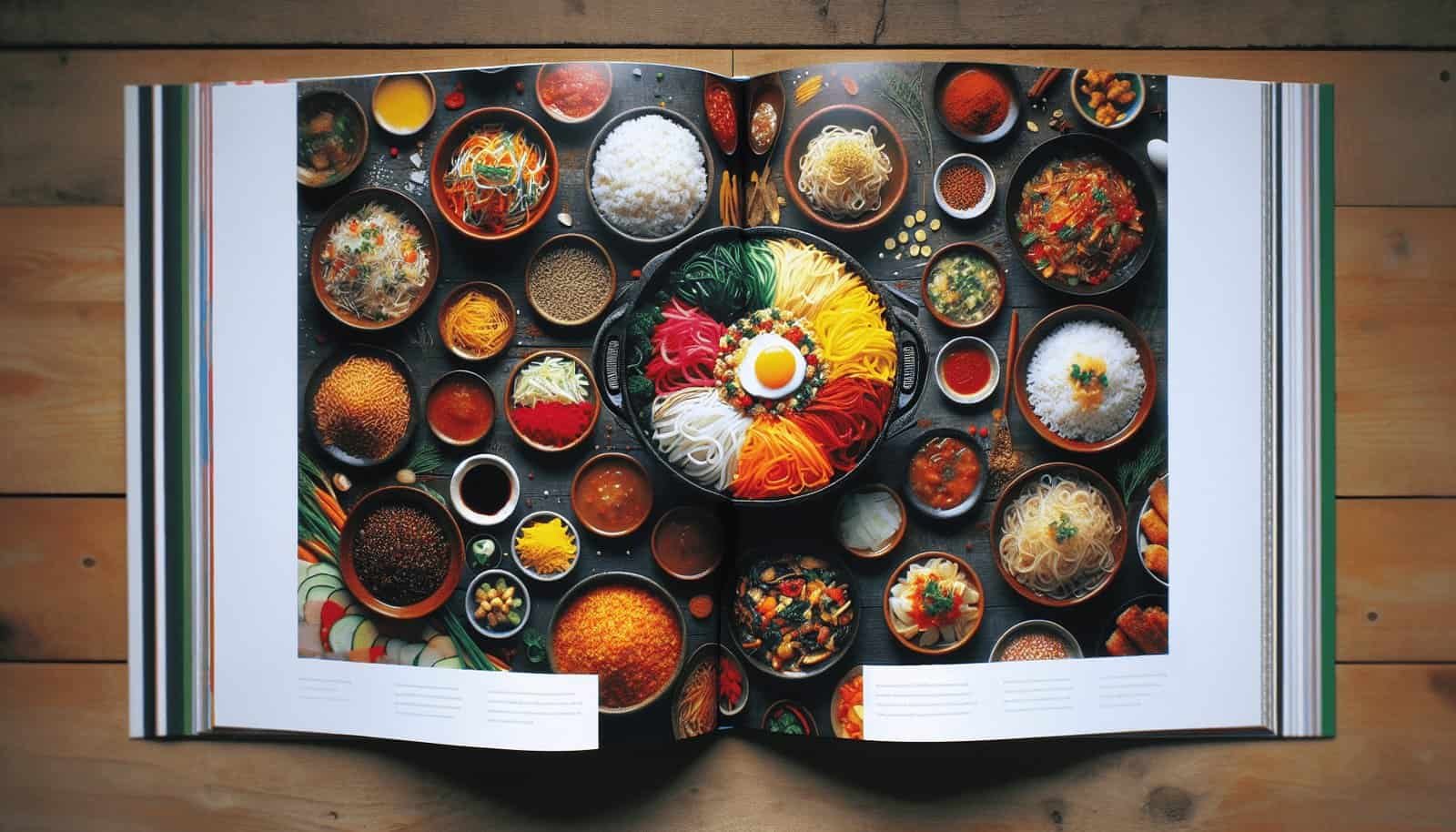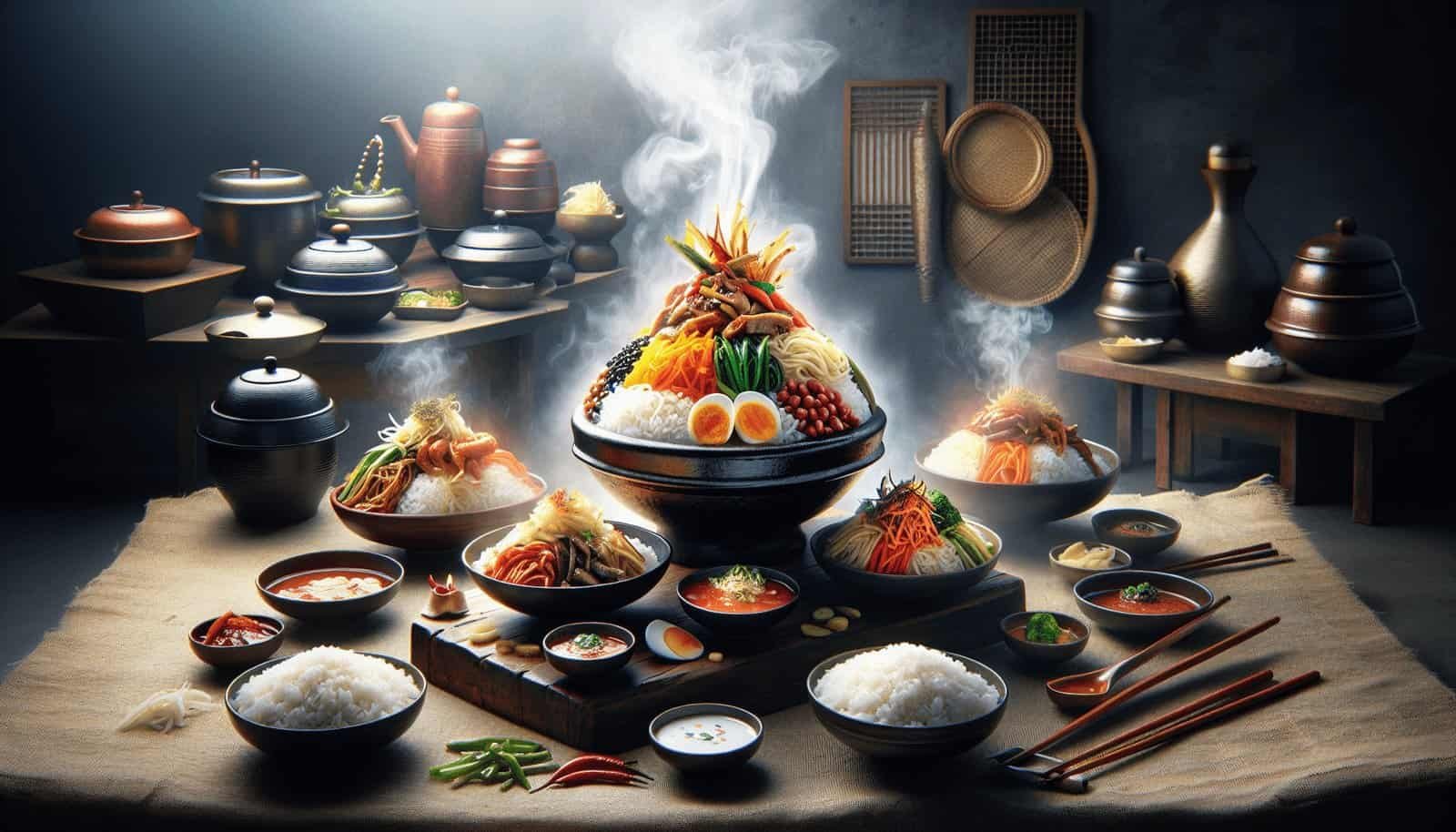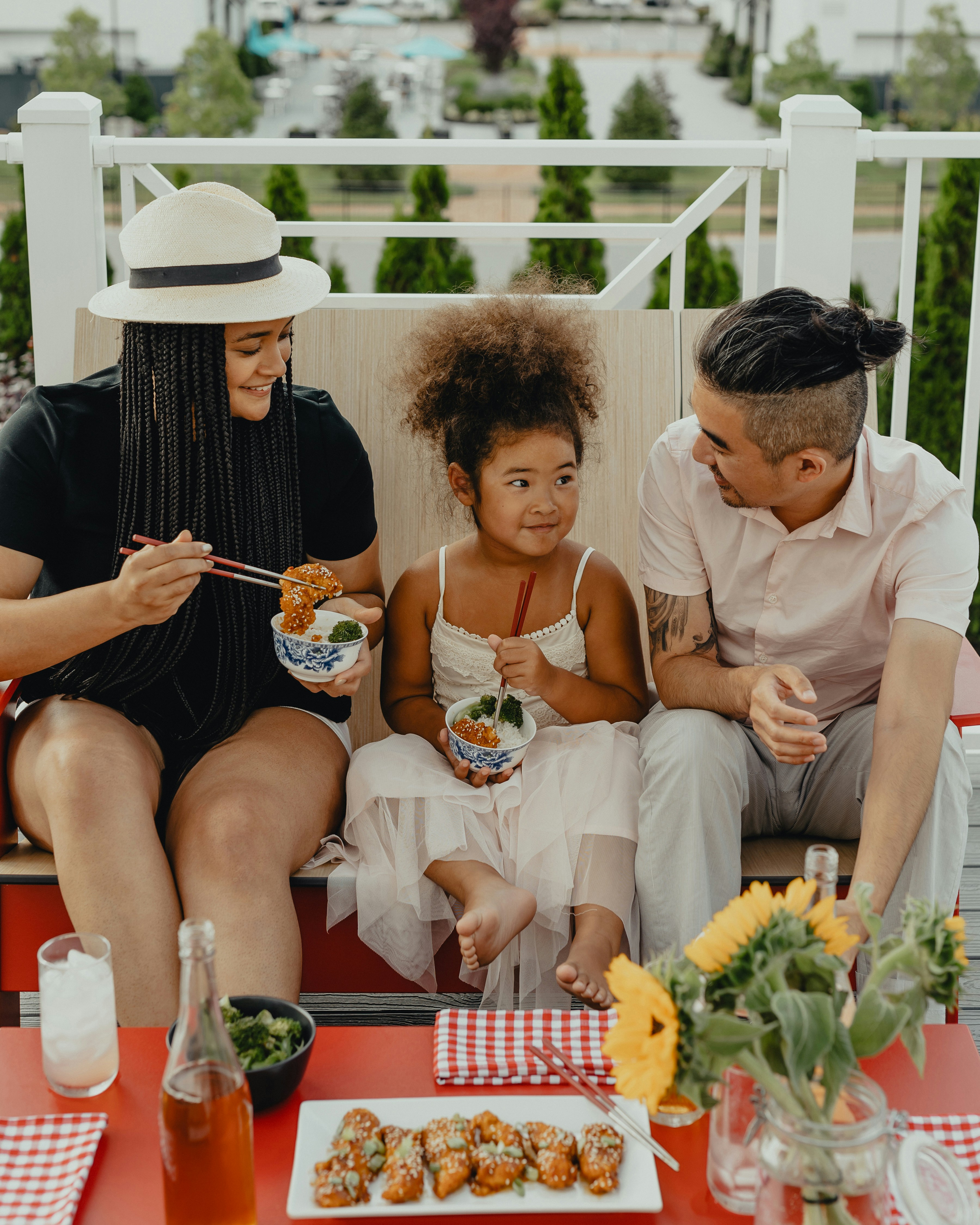If you’re a fan of Korean cuisine, then you’re in for a treat! In this article, we’ll explore the diverse world of traditional Korean rice dishes and the fascinating variations that make them unique. From classic staples like Bibimbap and Kimbap to lesser-known gems like Nurungji and Jumeokbap, get ready to embark on a culinary journey that will leave your taste buds tingling with excitement. So grab a bowl of rice and let’s dive into the delicious intricacies of these mouthwatering creations!
Bibimbap
Definition and origins
Bibimbap is a popular Korean rice dish that literally translates to “mixed rice.” It is a wholesome and satisfying meal that combines an array of colorful and nutritious ingredients. The origins of bibimbap can be traced back to the Joseon Dynasty in the late 19th century, where it was consumed as a dish for the royal court.
Ingredients and preparation
The key ingredients in bibimbap include rice, various sautéed and seasoned vegetables, meat (such as beef, chicken, or pork), fried egg, and gochujang sauce. The vegetables commonly used in bibimbap include carrots, mushrooms, spinach, bean sprouts, and zucchini, among others. These vegetables are individually prepared with a unique flavor profile, ensuring a harmony of tastes and textures when mixed together.
To prepare bibimbap, start by cooking rice and then arranging the sautéed vegetables, meat, and fried egg on top. It is traditionally served in a hot stone bowl called dolsot, which allows the rice to develop a crispy texture and adds warmth to the dish. The final touch is a generous drizzle of gochujang sauce, a spicy and savory red pepper paste that elevates the flavors.
Variations
There are several variations of bibimbap available, each with its own unique twist. One popular variation is dolsot bibimbap, where the rice and ingredients are served in a sizzling hot stone bowl, keeping the dish hot throughout the meal. Another variation is the vegetarian bibimbap, which substitutes the meat with tofu or tempeh, making it suitable for those following a plant-based diet. Additionally, some variations of bibimbap include a raw egg yolk, which adds a creamy richness to the dish when mixed with the hot rice.
Kimchi Bokkeumbap
Definition and origins
Kimchi Bokkeumbap, also known as Kimchi Fried Rice, is a delicious and flavorful Korean rice dish that combines the tangy and spicy flavors of kimchi with the comforting texture of fried rice. It is believed to have originated as a way to repurpose leftover rice and kimchi, creating a satisfying meal with minimal effort.
Ingredients and preparation
The main ingredients in Kimchi Bokkeumbap are rice, kimchi, and various other ingredients such as vegetables, meat, and seafood. The rice is typically stir-fried with kimchi, which provides a strong and distinctive flavor to the dish. Other commonly added ingredients include diced carrots, onions, and scallions, as well as proteins like diced chicken, pork, or shrimp.
To prepare Kimchi Bokkeumbap, start by frying the kimchi with some vegetable oil until it becomes fragrant. Then, add the cooked rice and stir-fry until it is evenly coated with the kimchi and takes on a slightly crispy texture. Finally, add the additional ingredients and continue stirring until everything is well combined and heated through.
Variations
While the basic recipe for Kimchi Bokkeumbap remains the same, there are variations that offer unique flavors and textures. One popular variation is Cheese Kimchi Bokkeumbap, where cheese is added to the fried rice, creating a gooey and indulgent twist. Another variation is Seafood Kimchi Bokkeumbap, which incorporates an assortment of fresh seafood, such as shrimp, mussels, and squid, for a delightful oceanic twist. Vegetarian versions of Kimchi Bokkeumbap are also available, using tofu or tempeh as a substitute for meat or seafood.
Japchae
Definition and origins
Japchae is a delicious Korean dish consisting of stir-fried glass noodles made from sweet potato starch, mixed with a combination of colorful vegetables and thinly sliced meat. With its vibrant appearance and delightful combination of flavors, Japchae has become a popular dish both in Korea and around the world.
Ingredients and preparation
The main ingredients in Japchae include sweet potato noodles, a variety of vegetables like carrots, mushrooms, bell peppers, and spinach, and thinly sliced meat, typically beef. The noodles are first cooked until they become translucent and then stir-fried with the vegetables and meat in sesame oil and soy sauce. This process allows the flavors to meld together while retaining the individual crunch of the vegetables.
To prepare Japchae, start by boiling the sweet potato noodles until they are cooked but still slightly firm. While the noodles are cooking, sauté the vegetables and meat until they are tender. Once the noodles are ready, toss them with the sautéed ingredients, along with a flavorful sauce made with soy sauce, sesame oil, and sugar. Garnish with sesame seeds and scallions to enhance the aroma and visual appeal.
Variations
While Japchae traditionally includes beef, there are variations that cater to different dietary preferences. Vegetarian Japchae replaces the meat with tofu or mushrooms, offering a protein-rich alternative. Japchae can also be customized by adding additional ingredients such as shrimp or squid to create Seafood Japchae. Each variation brings a unique combination of flavors and textures, allowing individuals to enjoy Japchae according to their preferences.
Gimbap
Definition and origins
Gimbap, also known as Korean sushi rolls, is a popular Korean dish resembling Japanese sushi rolls. However, it has distinct flavors and ingredients that set it apart. Gimbap originated as a convenient and portable snack, especially for picnics or lunchboxes, but has since evolved into a beloved staple of Korean cuisine.
Ingredients and preparation
The main ingredients in Gimbap are rice, seaweed (gim), and a variety of fillings such as vegetables, meat, fish, or seafood. The rice is seasoned with sesame oil or other flavorful ingredients before being spread onto the seaweed sheet. Fillings like carrots, spinach, pickled radishes, egg, and cooked ham or sausage are then arranged on top of the rice. The seaweed sheet is tightly rolled and sliced into bite-sized pieces.
To prepare Gimbap, start by spreading a thin layer of rice on the seaweed sheet, leaving a border at one end to seal the roll. Then, arrange the desired fillings in a straight line along the rice. With the help of a bamboo mat, tightly roll the Gimbap, making sure to seal it firmly. Once rolled, slice the Gimbap into bite-sized pieces and enjoy it as a snack or part of a meal.
Variations
Gimbap variations offer a wide range of flavors and textures to cater to different tastes. Kimbap, a popular variation, is similar to Gimbap but slightly different in presentation and fillings. Kimbap typically contains colorful fillings like carrots, perilla leaves, pickled radishes, and seasoned beef or fish cake. Another variation is Tuna Mayo Gimbap, which incorporates canned tuna mixed with mayonnaise for a creamy and savory twist. Vegetarian Gimbap is also available, with fillings like tofu, cucumber, and avocado, making it suitable for individuals following a plant-based diet.
Tteokbokki
Definition and origins
Tteokbokki is a beloved Korean street food dish known for its chewy and spicy rice cakes. It has gained international popularity, thanks to its unique flavors and textures. Tteokbokki originated during the late Joseon Dynasty and has evolved into a staple comfort food in modern Korean cuisine.
Ingredients and preparation
The main ingredients in Tteokbokki are rice cakes (tteok), gochujang (Korean red pepper paste), and various additional ingredients such as fish cakes, vegetables, and boiled eggs. The rice cakes are thick and cylindrical, providing a delightful chewy texture. Gochujang, the key ingredient, brings spice and depth of flavor to the dish.
To prepare Tteokbokki, start by boiling the rice cakes until they become soft and chewy. In a separate pan, create the spicy sauce by combining gochujang, soy sauce, sugar, and other desired seasonings. Then, add the rice cakes to the sauce along with other ingredients like fish cakes and vegetables. Simmer everything together, allowing the flavors to meld and the sauce to coat the rice cakes evenly.
Variations
There are various variations of Tteokbokki that cater to different tastes and preferences. Cheese Tteokbokki is a popular variation where melted cheese is added on top of the dish, providing a creamy and indulgent twist. Seafood Tteokbokki incorporates an assortment of fresh seafood like squid, shrimp, and mussels, offering a delightful oceanic flavor. Another variation is Gungjung Tteokbokki, which is a non-spicy version made with a soy-based sauce instead of gochujang, appealing to those who prefer milder flavors.
Kongnamul Gukbap
Definition and origins
Kongnamul Gukbap is a comforting and nourishing Korean rice dish that combines bean sprout soup (Kongnamul Guk) with steamed rice (Bap). It is a simple yet flavorsome meal that is popular for its health benefits and gentle flavors.
Ingredients and preparation
The main ingredients in Kongnamul Gukbap are bean sprouts, beef or pork, and rice. The dish is typically prepared by boiling the bean sprouts in a flavorful broth made from soy sauce, garlic, and anchovy stock. The broth infuses the bean sprouts with a mild and savory taste, which combines beautifully with the steamed rice.
To prepare Kongnamul Gukbap, start by boiling the bean sprouts until they become tender. In a separate pot, create the broth by simmering beef or pork with soy sauce, garlic, and anchovy stock. Once the sprouts are cooked, remove them from the boiling water and rinse them with cold water to retain their crunchiness. Serve the bean sprouts in a bowl with steamed rice, pouring the broth over the rice to complete the dish.
Variations
While Kongnamul Gukbap is typically enjoyed in its simple form, there are variations that offer additional flavors and textures. Some variations include the addition of tofu or mushrooms, providing a protein-rich element to the dish. Additionally, toppings like shredded seaweed, sesame seeds, or sliced scallions can be added to enhance the overall taste and presentation.

Samgyetang
Definition and origins
Samgyetang is a traditional Korean dish that consists of a whole young chicken stuffed with glutinous rice and simmered with ginseng and other medicinal herbs. It is often enjoyed during the hot summer months as a way to replenish energy and boost health. Samgyetang has a history dating back several centuries and is considered a nourishing meal with various health benefits.
Ingredients and preparation
The main ingredients in Samgyetang are a whole young chicken, glutinous rice, ginseng, jujubes, garlic, chestnuts, and other medicinal herbs. The chicken is stuffed with the glutinous rice along with the other ingredients, which helps to infuse the flavors and aromas into the meat during the cooking process.
To prepare Samgyetang, start by cleaning the chicken and removing the innards. Then, stuff the chicken cavity with the glutinous rice mixture, including ginseng, jujubes, garlic, and chestnuts. The prepared chicken is then simmered in a pot of water along with various medicinal herbs until the meat is tender and rich in flavor. The resulting broth is also enjoyed as a nourishing and comforting soup.
Variations
While Samgyetang has a classic preparation method, there are variations that offer additional flavors and ingredients. Some variations include the addition of dried mushrooms or goji berries, enhancing the medicinal and nutritional properties of the dish. For those who prefer a vegetarian option, Gongju Samgyetang replaces the chicken with soybean curd or tofu, creating a plant-based alternative that still provides a satisfying and nourishing experience.
Jumukbap
Definition and origins
Jumukbap, also known as Korean rice balls, is a portable and convenient dish that is commonly enjoyed as a snack or a light meal. The name “Jumukbap” refers to the shape of the rice balls, which are tightly formed into a fist shape (Jumuk). Jumukbap is believed to have originated as a practical way to enjoy rice and various ingredients on-the-go.
Ingredients and preparation
The main ingredient in Jumukbap is rice, which is typically mixed with various fillings such as seasoned vegetables, meat, or seafood. The rice is cooked and then seasoned with sesame oil and salt. The fillings are prepared separately, ensuring that each ingredient brings its unique flavors and textures to the rice balls.
To prepare Jumukbap, start by mixing the cooked rice with sesame oil and salt to taste. Then, take a small handful of the seasoned rice and flatten it on your palm. Add the desired fillings in the center, such as seasoned vegetables or stir-fried meat, seafood, or tofu. Shape the rice and fillings into a tightly packed ball by folding the rice over the fillings, using slight pressure to ensure a firm shape. Repeat the process with the remaining rice and fillings.
Variations
Jumukbap offers endless possibilities for customization, allowing for a variety of flavors and textures. Some variations include adding seaweed or sesame seeds to the outer layer of the rice balls for an added crunch and aroma. Vegetarian Jumukbap can be made by using vegetable-based fillings such as pickled radish or marinated tofu, catering to individuals following a plant-based diet. Jumukbap is highly versatile, making it an ideal choice for a quick and satisfying meal or a flavorful snack.

Ssambap
Definition and origins
Ssambap is a traditional Korean dish that consists of various ingredients, usually vegetables and meat, wrapped in lettuce or other leafy greens, and eaten together as a bite-sized package. The name “Ssambap” comes from the Korean word “ssam,” which means wrapped or enclosed. Ssambap is known for its interactive dining experience and the vibrant combination of flavors and textures.
Ingredients and preparation
The main ingredients in Ssambap are lettuce or other leafy greens, along with a variety of accompanying ingredients such as grilled or stir-fried meat, rice, kimchi, and dipping sauces. The lettuce or greens provide a refreshing and crunchy base for the other ingredients, while the meat and rice bring savory and filling elements to the dish.
To prepare Ssambap, start by washing and separating the lettuce leaves or other greens. Prepare the accompanying ingredients by grilling or stir-frying the meat and cooking the rice. Additional side dishes like kimchi, pickled radishes, or seasoned vegetables can also be prepared. To enjoy Ssambap, take a lettuce leaf, place a small amount of rice, meat, and other desired ingredients in the center. Wrap the lettuce leaf around the ingredients, creating a small package, and dip it into the accompanying sauce before biting into the delicious combination of flavors.
Variations
Ssambap offers endless opportunities for customization and creativity, making it a versatile dish with various regional and personal variations. The choice of greens can vary, including perilla leaves, cabbage leaves, or sesame leaves, each offering a distinct flavor profile. The choice of meat can range from grilled beef or pork to marinated chicken or even seafood. Additionally, the choice of accompanying side dishes and dipping sauces can add depth and complexity to the flavors, allowing individuals to tailor the Ssambap experience to their preferences.
Jumukbab
Definition and origins
Jumukbab, also known as Korean rice balls, is a simple and portable dish that consists of compressed rice shaped into small, round balls. The name “Jumukbab” comes from the Korean word “jumuk,” which means fist, referring to the shape of the rice balls. Jumukbab is a popular snack or appetizer and is enjoyed by people of all ages.
Ingredients and preparation
The main ingredient in Jumukbab is rice, which is typically steamed or cooked until it reaches a soft and sticky consistency. The rice is then seasoned with a bit of salt or sesame oil to enhance the flavor of the rice balls. Jumukbab can be enjoyed plain or filled with various ingredients like seasoned vegetables, meat, or seafood.
To prepare Jumukbab, start by cooking the rice until it is fully cooked and slightly sticky. Once the rice is cooked, let it cool slightly to make it easier to handle. Season the rice with a pinch of salt or a drizzle of sesame oil, mixing it gently to evenly distribute the seasoning. Take a small handful of the seasoned rice and shape it into a compact round ball using your hands and gentle pressure. Repeat the process with the remaining rice.
Variations
Jumukbab can be customized to suit different taste preferences and dietary needs. Some variations include adding fillings to the rice balls, such as seasoned vegetables or grilled meat, to create a flavorful surprise at the center. Vegetarian Jumukbab can be made by using vegetable-based fillings like tofu or marinated mushrooms. The size of the rice balls can also vary, with smaller balls being ideal for bite-sized appetizers or larger ones for a more substantial snack. Overall, Jumukbab offers a simple and versatile way to enjoy rice in a fun and convenient form.



